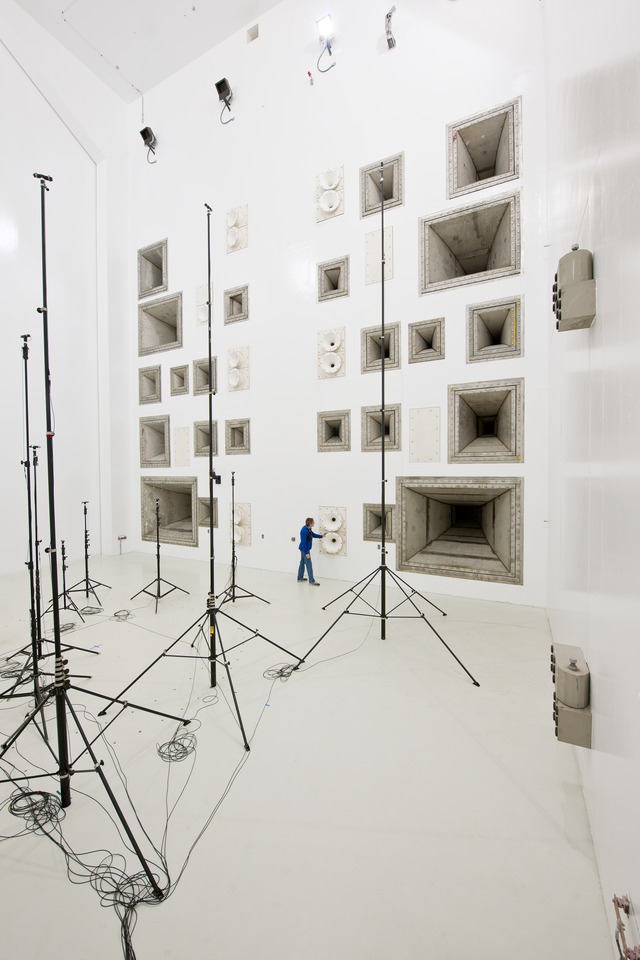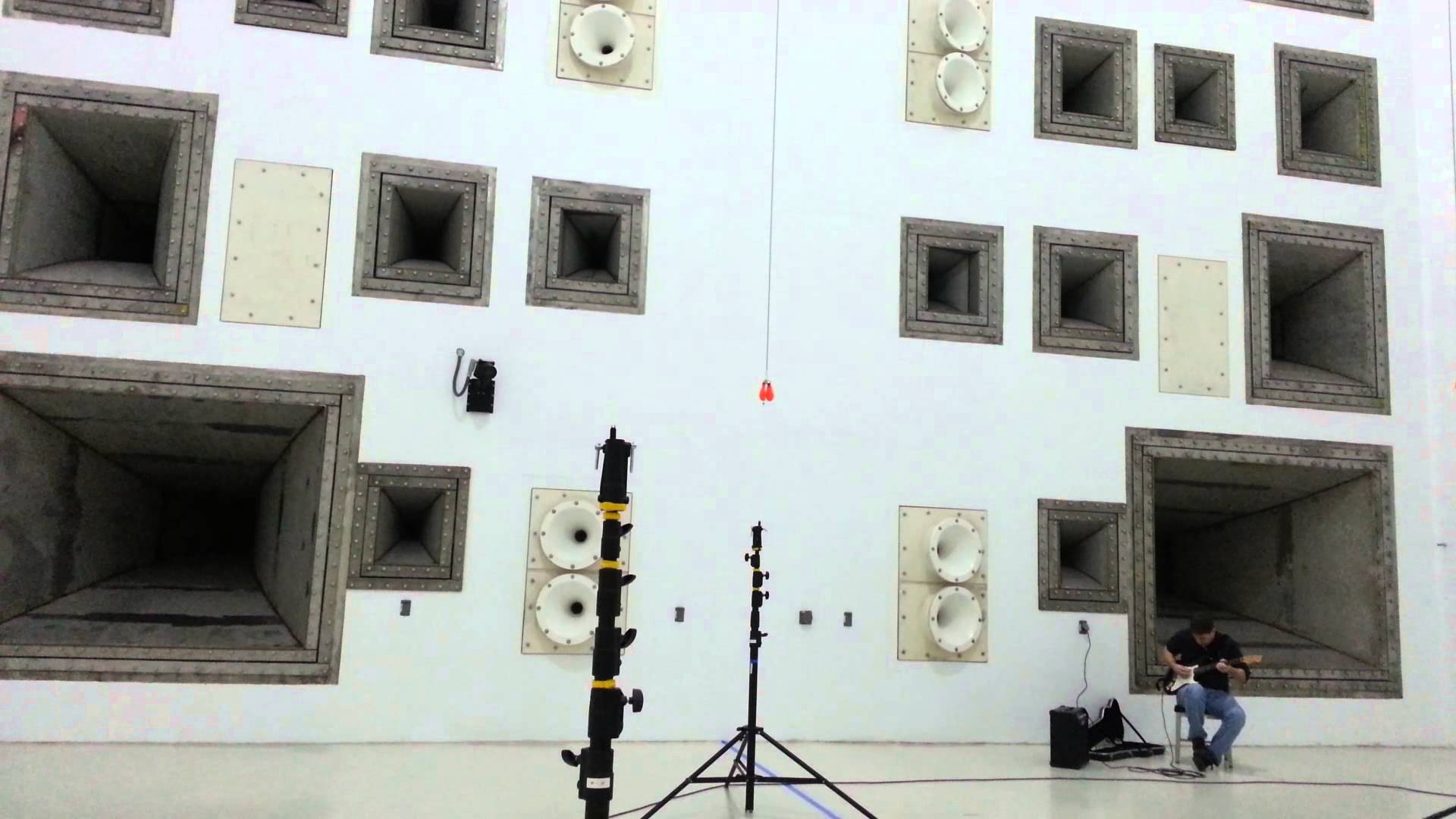Rerurn to Romy the Cat's Site
In the Forum: Horn-Loaded Speakers
In the Thread: NASA Reverberant Acoustic Test Facility.
Post Subject: NASA Reverberant Acoustic Test Facility.Posted by Romy the Cat on: 7/3/2014
fiogf49gjkf0d
I have no idea what that all about but it is nice to know that my taxes goes for somebody building horns.
"The Reverberant Acoustic Test Facilit (RATF) chamber is located within the Vibroacoustic Highbay, taking advantage of the 1.8 m (6 ft) thick surrounding concrete walls to help attenuate sound migration through the SPF. The highbay also serves as redundant protection from the RATF nitrogen atmosphere during operation. The RATF is a 2,860 m3 (101,189 ft3) reverberant acoustic chamber capable of achieving an empty-chamber acoustic overall sound pressure level (OASPL) of 163 dB. The facility structure is designed for a future upgrade to 166 dB OASPL, including areas in the horn room wall which have been left blank for future installation of additional modulators/horns. The RATF includes various supporting sub-systems including gaseous nitrogen generation system, horn room with acoustic modulators and horns, acoustic control system, and hydraulic supply system. Test articles are mounted onto elevated customer-provided mounting fixtures for testing. The chamber has been constructed with load-bearing wall attachments for future installation of a 5-ton interior bridge crane. The chamber can be operated as a Class 100,000 clean room once the access doors are closed and the facility is cleaned. The combinations of servo-hydraulic and electro-pneumatic noise modulators utilize gaseous nitrogen capable of producing a tailored wide-range of acoustic spectrums in the frequency range from 25 to 10,000 Hz. The RATF chamber internal dimensions are 11.4 m (37.5 ft) wide by 14.5 m (47.5 ft) deep by 17.4 m (57 ft) high.
A maximum of 19 control microphones can be placed around the test article for closed-loop control using the Acoustic Control System (ACS). The ACS, control microphones, or other response instrumentation (accelerometers, microphones) may be input into the Analog Abort System (AAS) to provide automatic shutdown capability. Each of twenty-three (23) servo-hydraulic acoustic modulators is coupled with individual horns of six different cut-off frequencies. Each of thirteen (13) electro-pneumatic acoustic modulators is coupled with individual horns of one cut-off frequency. This combination of modulators and horns provides for an extremely variable and tailored acoustic spectrum. Threaded inserts are located in the floor for attachment of test article mounting fixtures.
The East side of the chamber has a large rolling door and hinged door to provide access to the chamber up to 10.5 m (34.5 ft) in width. A 5.5 m (18 ft) wide by 4.2 m (14 ft) high door is located on the West side of the chamber for loading equipment when the vacuum chamber is occupied.
The Vibroacoustic Highbay is secured and support systems (hydraulics, compressed air, liquid nitrogen, gaseous nitrogen, HVAC systems, and video systems) are setup and energized. A watchdog Facility Control System (FCS) monitors these sub-systems and ensures that all permissives and interlocks are verified. The acoustic chamber is filled with a predetermined level of gaseous nitrogen. The FCS verifies that a matching modulator selection file agrees with the ACS and subsequently provides a Run Permit to the ACS. The ACS performs a self-check and the operator initiates testing using the tailored choice of modulators/horns. The nitrogen generation system automatically vaporizes liquid nitrogen into gaseous nitrogen as required up to 1,981 standard cubic meters per minute (70,000 scfm). At the conclusion of testing, fresh air is force-ventilated into the chamber via the HVAC system to purge the chamber of nitrogen for safe entry. Temperature, humidity and oxygen monitors are located in the chamber and highbay."


Rerurn to Romy the Cat's Site